shares
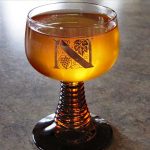

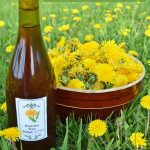
Wine out of dandelions ? You bet ! Making homemade dandelion wine is a longstanding family custom. We do n’t make it every year, but I do like to keep a few bottles on hand for company .
The preference of this dandelion wine is rich, gold and warming – more like a good brandy than a wine. I ‘ve had friends who do n’t normally like wine comment that they do enjoy this “ give tonic ” .
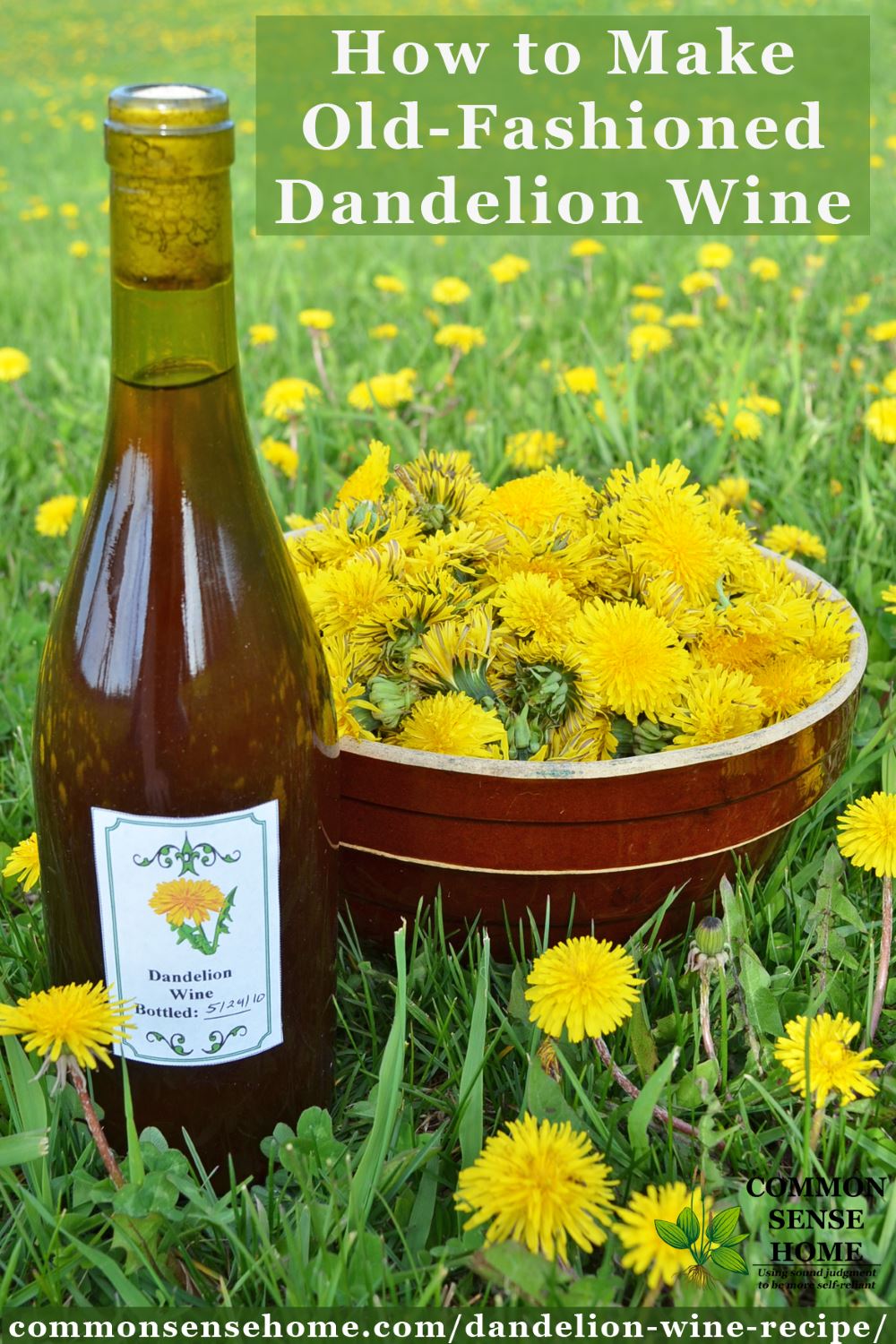
When we get dandelions, we get LOTS OF DANDELIONS ! They are everywhere ! ( Boy photos are from 2010. They have grown quite a bite since then, but I kept these photos here for the happy memories. )
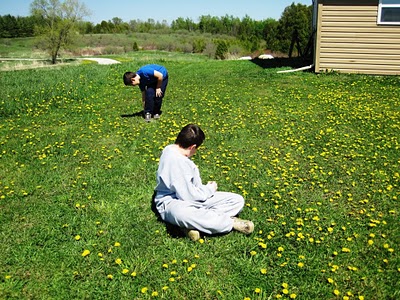 Make sure your dandelion flowers are free of pesticides, herbicides and other contaminants. I do n’t rinse the blossoms, though they are sterilized during the first partially of brew .
Make sure your dandelion flowers are free of pesticides, herbicides and other contaminants. I do n’t rinse the blossoms, though they are sterilized during the first partially of brew .
Do n’t pick dandelions for wine or eating from an area used by pets for their “ toilet ”. As I explained to a subscriber in the comments, I ‘m fairly certain capricorn make will not wash off .
Do n’t Make this Dandelion Wine Mistake !
For dandelion wine, use the yellow flower petals only. Leaving the petals attached to the park al-qaeda of the flower will result in a bitter, unpleasant wine .
My neighbor made this mistake when she tried to make dandelion wine, and she ended up throwing out the whole batch .
I use 3 quarts of loosely packed yellow dandelion petals. not 3 quarts of flower heads, 3 quarts of petals only .
If you do n’t have enough dandelion petals from one foot, go ahead and freeze the petals until you have enough .
All your zymosis vessels should be glass, ceramic, stainless steel or food grad plastic. Never ferment in aluminum or cast-iron, as it can react with the wine .
The boys and I sat down to a school term of “ irregular picking ” to remove the scandalmongering petals from the blossoms. You want to remove the petals a soon as possible after picking, as the flower heads close over prison term. once they close, it ‘s street fighter to get the petals off .
If you are working alone, it may be best to pick some of the flowers needed, remove petals, then pick more flowers and repeat. That way, you wo n’t have trouble with the flower heads closing before you have time to clean them .
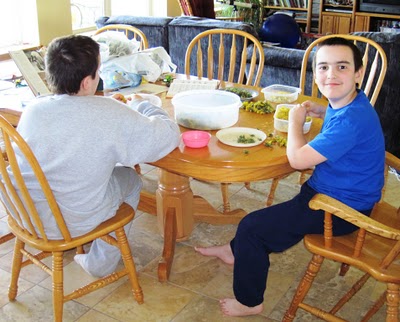
Homemade Dandelion Wine Recipe
“ Dandelion wine, believed to be of Celtic origin, is regarded as one of the fine country wines of Europe. In the late 1800s and early 1900s, it was not proper for ladies to drink alcohol. however, dandelion flower wine was considered so remedy to the kidneys and digestive system that it was deemed medicative even for the ladies. “
Adapted from Dandelion Medicine, in combination with my beget ‘s recipe .
Ingredients
- 3 quarts dandelion petals
- 1 gallon water
- 2 oranges, with peel, preferably organic
- 1 lemon, with peel, preferably organic
- 3 pounds sugar
- 1 package wine yeast or champagne yeast
- 1 pound raisins, preferably organic (Buy organic raisins)
How to make dandelion wine – Directions
1 ) Collect the blossoms when they are fully open on a cheery day. Remove any green parts .
2 ) Bring the body of water to a boiling point and pour it over the flowers in a large pot or crock. Cover with a towel to keep dust out and let steep for three days. stimulate daily to keep the petals submerged. They will develop a fusty smell. This is normal .
 3 ) Prepare the oranges and the lemon. Zest about half of the rind and peel off the remainder in thin strips. You want to minimize the sum of white pith added to the brew. Peel the pith off the fruit and slice into thin rounds .
3 ) Prepare the oranges and the lemon. Zest about half of the rind and peel off the remainder in thin strips. You want to minimize the sum of white pith added to the brew. Peel the pith off the fruit and slice into thin rounds .

 4 ) Add the lemon and orange zest to the flower-water mixture and bring to a boil. Remove from heat, strain out solids. Dissolve the carbohydrate in the flower urine. Allow to cool to room temperature .
4 ) Add the lemon and orange zest to the flower-water mixture and bring to a boil. Remove from heat, strain out solids. Dissolve the carbohydrate in the flower urine. Allow to cool to room temperature .
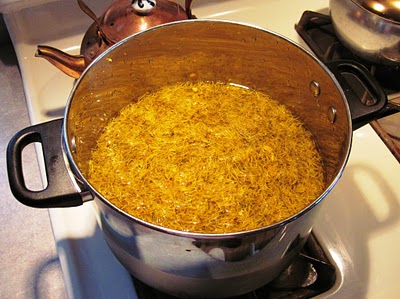 5 ) Add the yeast, orange and lemon slices, and raisins to the liquid. Put everything into a carbon black ( or wide talk carboy with airlock ) to ferment. I cover my crock with a clean cotton towel held down by a rubberize band to keep dust and bugs out. stir daily with a wooden spoon or non-reactive stir stick .
5 ) Add the yeast, orange and lemon slices, and raisins to the liquid. Put everything into a carbon black ( or wide talk carboy with airlock ) to ferment. I cover my crock with a clean cotton towel held down by a rubberize band to keep dust and bugs out. stir daily with a wooden spoon or non-reactive stir stick .
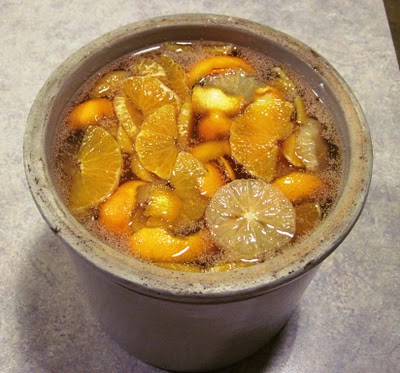
Bottling the wine
You have two options for bottling your homemade dandelion wine. You can- let it finish in bottles, or move to a carboy and then bottle .
To finish in bottles : When the primary zymosis concoction stops bubbling ( 1 -2 weeks ), agitation is about done. Strain the fluid through respective layers of cheesecloth or a flour sack towel and transfer to sterilized bottles .
Slip a chapfallen balloon over the top of each bottle to monitor for promote zymosis. When the balloon remains deflated for 24 hours, agitation is complete.
Read more: The 36 Best (Old) Books We Read in 2021
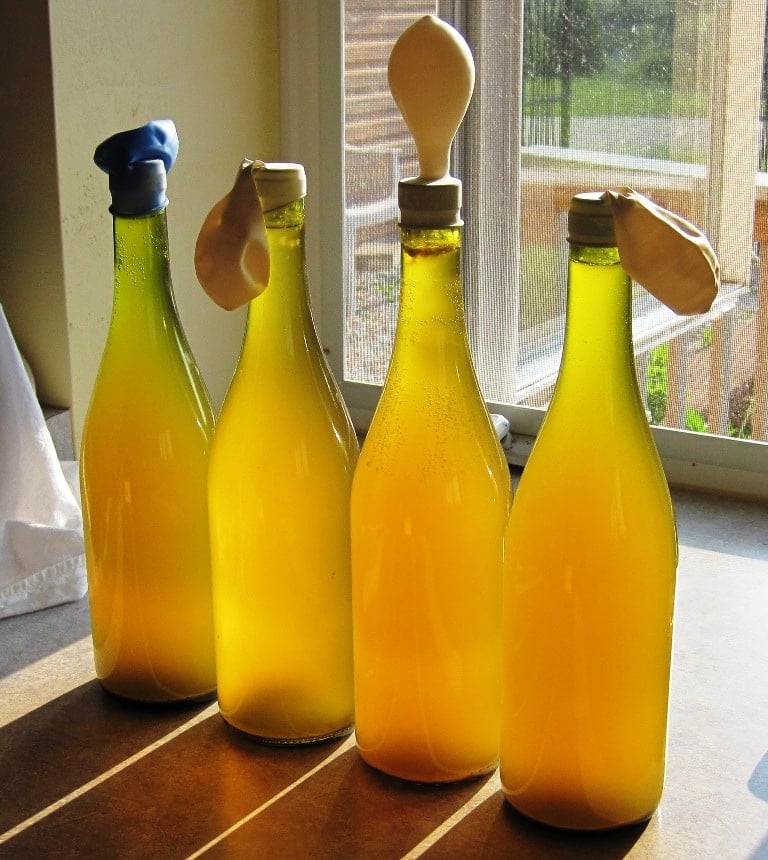
Cork the bottles and store in a cool, colored place for at least six months before drink .
note : Do not seal bottles tightly before they finish fermenting, and do n’t put them somewhere warm. otherwise, you ‘ll end up with exploding bottles, like my baby, Mary, when she stashed them in a closet. apparently, it sounded like there were bombs going off or they were being shot at .
If you would like a clearer wine, rack the wine into a gallon carboy with airlock before the final examination bottle. Allow to ferment in the carboy for 2-3 months, and then rack into the bottles .
If you’d like to download a pdf copy of my dandelion wine labels, just follow this link: Printable Dandelion Wine Labels
If you do n’t want to send the wine fruit to the compost pile, try Dandelion Wine Fruitcake .
Recommended materials for Making Dandelion Wine
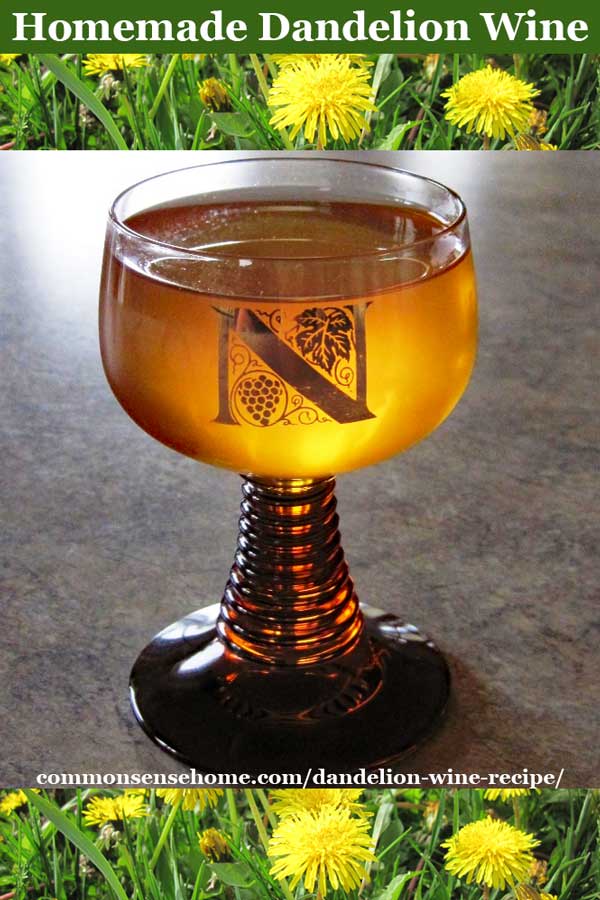
Print Friendly Recipe
Dandelion Wine
Print Recipe
★★★★★
5 from 3 reviews
A legato and hearty flower wine with citrus notes that will warm you from capitulum to toe .
- Yield:
4
–
5
bottles
1
x
Ingredients
Scale
- 3 quarts dandelion blossoms
- 1 gallon water
- 2 oranges, with peel, preferably organic
- 1 lemon, with peel, preferably organic
- 3 pounds sugar
- 1 package wine yeast
- 1 pound raisins, preferably organic
Instructions
- Collect the blossoms when they are fully open on a sunny day. Remove any green parts.
- Bring the water to a boil and pour it over the flowers in a large pot or crock. Cover with a towel to keep dust out and let steep for three days. Still daily to keep the petals submerged.
- Prepare the oranges and the lemon. Zest (finely grate) about half of the rind and peel the rest off in very thin strips. You want to minimize the amount of white pith added to the brew.
- Finish peeling the citrus, and slice them into thin rounds.
- Add the lemon and the orange zest to the flower-water mixture and bring to a boil. Remove from heat, strain out solids, then add the sugar, stirring until it is dissolved. Allow to cool to room temperature.
- Add the yeast, orange and lemon slices, and raisins to the liquid. Put everything into a crock (or wide mouth carboy with airlock) to ferment. I cover my crock with a clean cotton towel held down by a rubber band. Stir daily with a wooden spoon or non-reactive stir stick.
Bottling the Wine
You have two options for bottling your homemade dandelion wine. You can- let it finish in bottles, or move to a carboy and then bottle .
To finish in bottles : When the primary zymosis mix stops bubbling ( 1 -2 weeks ), agitation is about done. Strain the fluid through respective layers of cheesecloth or a flour hammock towel and transfer to sterilized bottles .
Slip a deflate balloon over the circus tent of each bottle to monitor for promote zymosis. When the balloon remains deflated for 24 hours, zymosis is accomplished .
Cork the bottles and store in a cool, dark place for at least six months before drink .
If you would like a clearer wine, rack the wine into a gallon carboy with airlock before the final bottle. Allow to ferment in the carboy for 2-3 months, and then rack into the bottles .
Notes
Do not seal bottles tightly before they finish fermenting, and don ’ deoxythymidine monophosphate put them somewhere warm. differently, you ’ ll goal up with exploding bottles, like my sister, Mary, when she stashed them in a water closet. apparently, it sounded like there were bombs going off or they were being shot at .

Is Dandelion Wine Alcoholic ?
Yes. If you use wine yeast as recommended in the recipe, you should end up with about 12 to 13 percentage alcohol .
If you ‘re feeling adventurous, you may be able to nurture wild yeast from the raisins into fermenting. Wild yeast brews will have a lower alcohol contentedness, because wild yeast dies off if the alcohol levels get excessively high .
You can learn more about using wild yeasts in the book, “ The Wildcrafting Brewer “, or in the Art of Herbal Fermentation on-line class from The Herbal Academy.
You may also enjoy:
originally published in 2010, last updated in 2020 .


